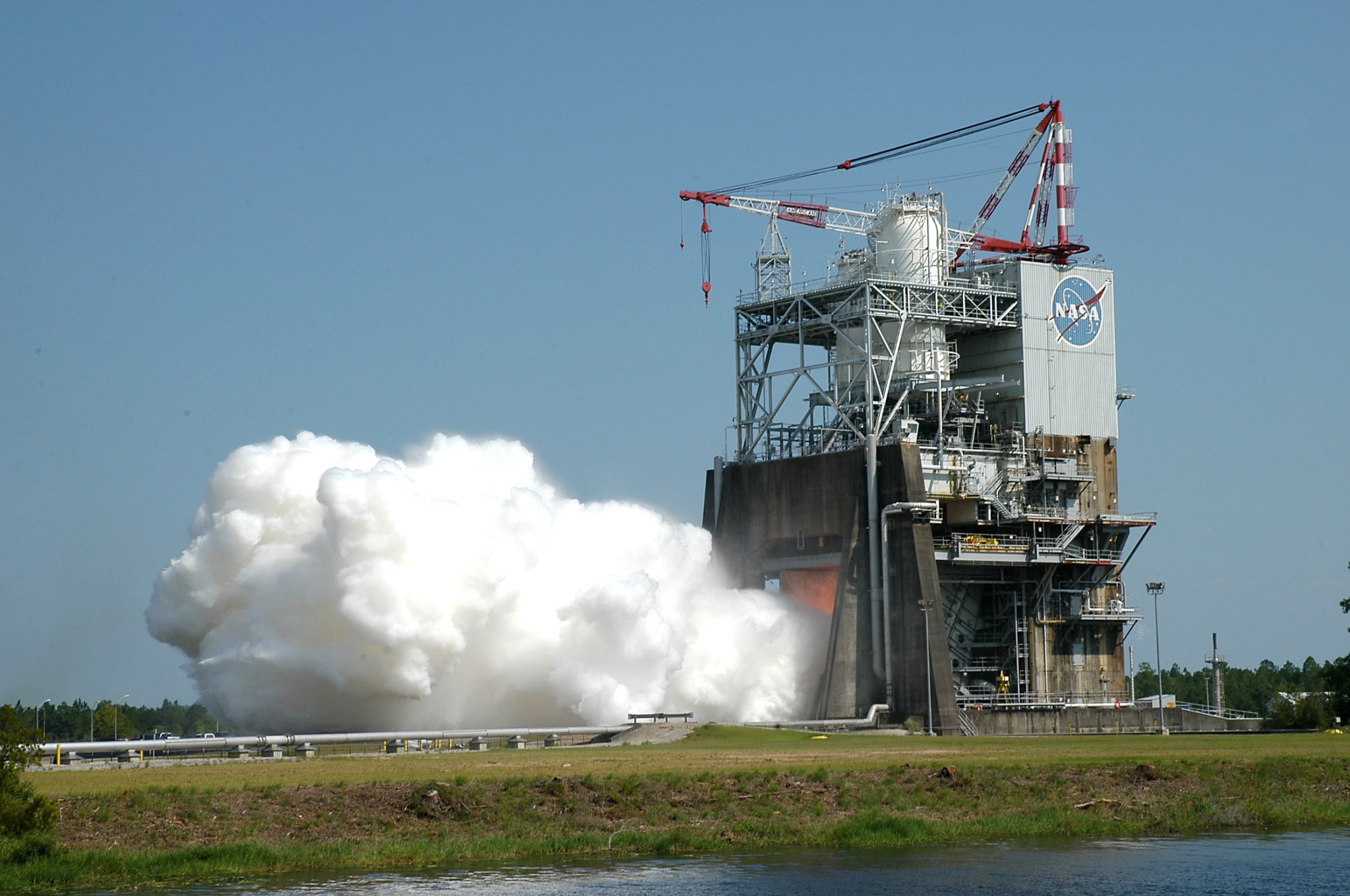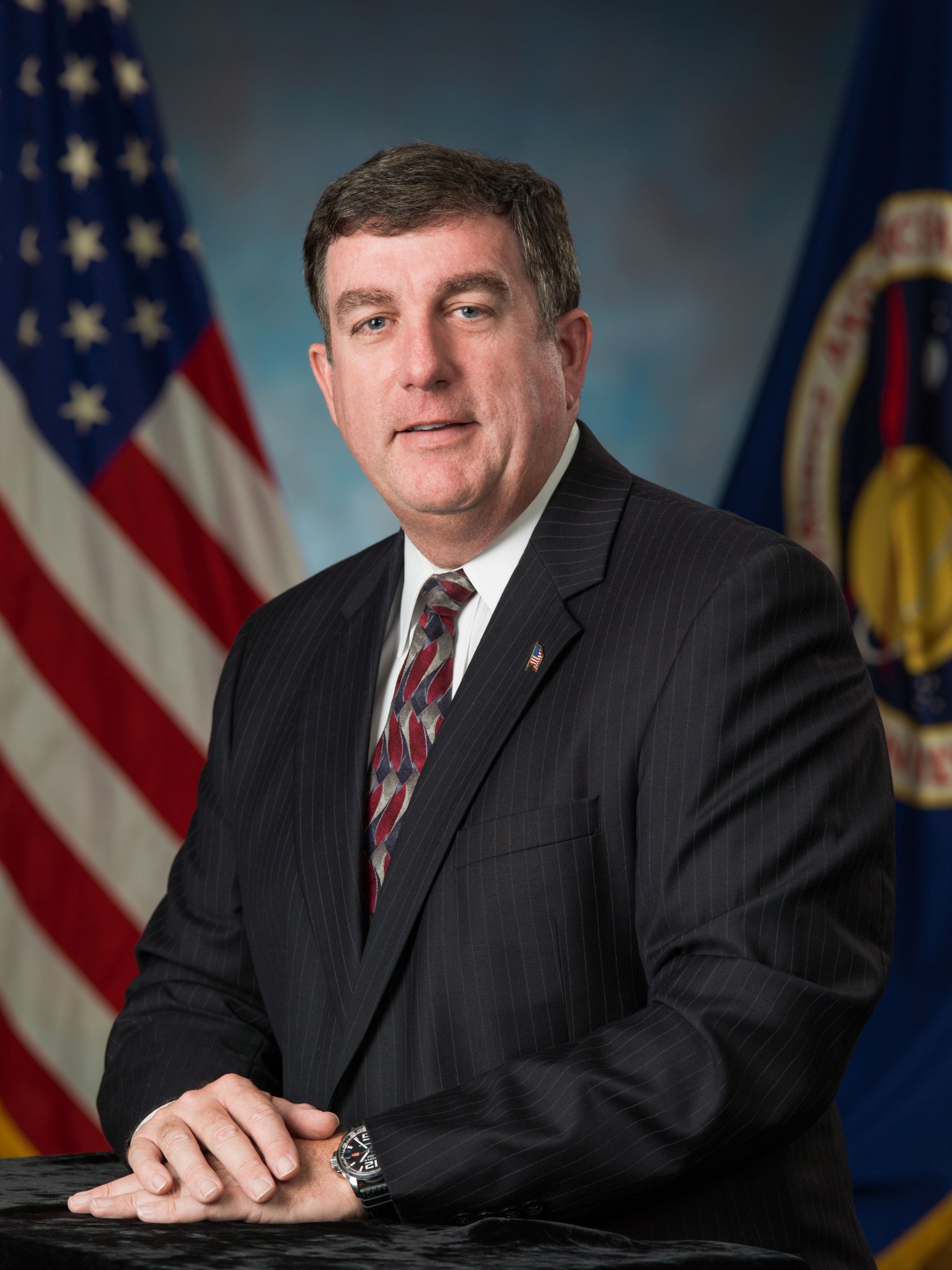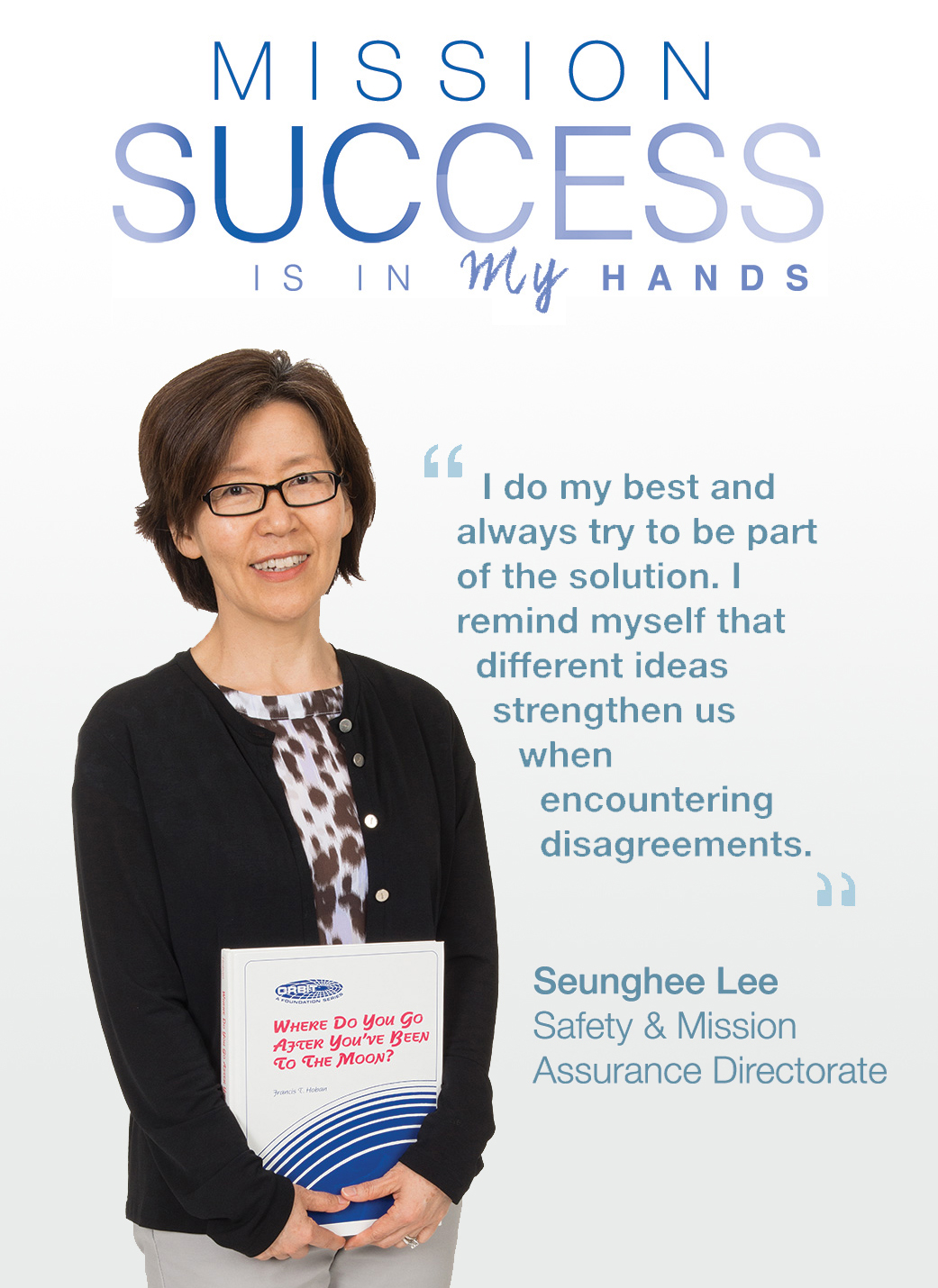In This Week’s Star
- Countdown to Deep Space Continues with Latest RS-25 Test
- NASA Names New Manager of International Space Station Program
- Mission Success Is in Our Hands: Q&A with Seunghee Lee, Program Integration Engineer
- Experts Highlight Perseid Meteor Shower With Overnight NASA TV Broadcast
- Marshall Intern Awards Announced During 2015 Poster Exposition
- RS-25 Engine Test, Chandra Observations and Perseid Meteor Shower Featured On ‘This Week @NASA’
- This Week in NASA History: Mueller Pens Skylab Concept — Aug. 16, 1966
Countdown to Deep Space Continues with Latest RS-25 Test
NASA’s countdown to deep space continued Aug. 13 with a 535-second test of its Space Launch System RS-25 rocket engine to collect engine performance data at NASA’s Stennis Space Center. SLS will launch astronauts in the Orion spacecraft on missions to deep space and eventually to Mars. Operators on the A-1 Test Stand at Stennis are conducting the test series to qualify an all-new engine controller and put the upgraded former space shuttle main engines through the rigorous temperature and pressure conditions they will experience during an SLS mission. There will be one more test of this RS-25 developmental engine before testing of flight engines begins later this fall. More information on the test can be found here. Watch a video of the test here.
NASA Names New Manager of International Space Station Program
NASA’s springboard for discovery, innovation and deep space exploration has a new chief. The agency has named Kirk Shireman as the new manager of its International Space Station Program, based at the Johnson Space Center, where Shireman has served as deputy center director since 2013.
“Kirk brings considerable space station experience to this new leadership role. He will manage the overall development, integration and operation of the program,” said William Gerstenmaier, associate administrator for NASA’s Human Exploration and Operations Mission Directorate. “As program manager, Kirk will work directly with international partners to ensure safe and reliable operation of the orbiting laboratory, and foster continued scientific research that benefits humanity and helps prepare the agency for its journey to Mars.”
Shireman served as deputy program manager for the space station from 2006 to 2013, just prior to stepping into the position of deputy center director. He also served as the chair of the ISS Mission Management Team after managing several of its subsystem offices, and managed multiple offices for NASA’s Space Shuttle Program. He earned a bachelor’s degree in aerospace engineering from Texas A&M University in College Station and began his career with NASA in 1985.
NASA has recognized Shireman with the agency’s Exceptional Achievement Medal, Silver Snoopy award in 1990 and Presidential Rank Award in 2010. In 2013, the National Space Club awarded Shireman its Eagle Manned Mission Award for his outstanding leadership of the International Space Station.
Shireman succeeds Michael Suffredini, who is leaving the agency to take a position in private industry.
“During Mike’s tenure, the international project successfully completed construction and transitioned into a fully functional microgravity laboratory,” Gerstenmaier said. “Under his leadership, the station opened avenues for a new commercial marketplace in space and established a platform for groundbreaking research.”
Since Suffredini became program manager in 2005, the space station has evolved to become the jumping-off point for NASA’s next giant leap in exploration, enabling research and technology developments that will benefit human and robotic exploration of destinations beyond low-Earth orbit, including asteroids and Mars. To date, more than 1,700 research experiments have been conducted aboard the station, bringing together researchers from more than 80 countries in an effort to better the lives of all humanity.
Mission Success Is in Our Hands: Q&A with Seunghee Lee, Program Integration Engineer
Seunghee Lee, program integration engineer in the Safety & Mission Assurance Directorate at NASA’s Marshall Space Flight Center, recently talked with Marshall Public Affairs Officer Molly Porter about “Mission Success Is in Our Hands,” an initiative underway at Marshall to strengthen team members’ commitment to mission assurance and flight safety.
Years at Marshall: Almost 14 years
What are the key responsibilities of your job? I provide technical and programmatic guidance as Marshall’s representative for NASA’s Range Safety Program in development of the Space Launch System Program flight safety system. I support and coordinate SLS risk management activities.
How does your work support the safety and success of NASA and Marshall missions? I help NASA identify and effectively control hazards and risks associated with the spaceflight program to protect the health and safety of the public, NASA’s workforce and our assets.
What does “Mission Success Is In Our Hands” mean to you? I am personally accountable for my work as well as helping team members to succeed. I do my best and always try to be part of the solution. I remind myself that different ideas strengthen us when encountering disagreements.
Do you have a story or personal experience to share that can help others understand the significance of mission assurance and flight safety? What did you learn from it? When I began working on the shuttle program at NASA’s Kennedy Space Center, one of my senior lead engineers told me, “If you and I agree on everything, one of us is not needed here.” He encouraged me to question his test procedures even though I was a novice systems engineer. Practicing his advice led me to identify and correct a few mistakes in flight hardware test procedures, which prevented potential flight hardware damage, protecting test personnel. What did I learn from that? Question. Don’t assume. Also, welcome the questions.
How can we work together better to achieve mission success? We can remind ourselves that every one of us has the same goal — mission success. When there is a disagreement, we must make a diligent effort to understand the difference and collaborate as a team to benefit from many diverse ideas.
Experts Highlight Perseid Meteor Shower With Overnight NASA TV Broadcast
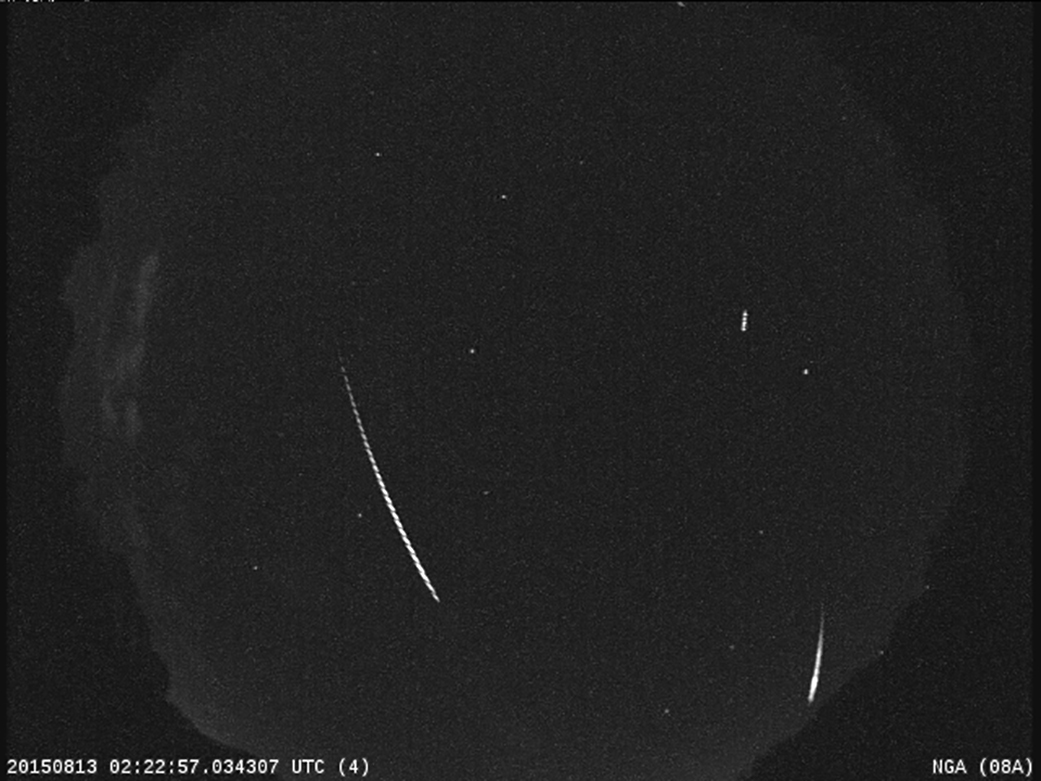
Marshall Intern Awards Announced During 2015 Poster Exposition
By Christopher Blair
The 2015 summer internship session may have recently ended at NASA’s Marshall Space Flight Center, but the work and research conducted by these interns — our nation’s next generation of scientists and engineers — will have a long-standing impact on future projects with NASA and its business, corporate and university partners.
During the annual summer internship poster exposition, held Aug. 5 at Marshall’s Activities Building 4316, more than 140 interns met with Marshall team members to discuss their summer experiences and accomplishments.
The poster expo, sponsored in part by Lockheed Martin, long-time prime contractor with NASA, not only highlighted the completion of the summer internships, but provided an opportunity for Marshall leadership, including Center Director Patrick Scheuermann, to recognize students for their achievements in categories such as science, engineering and others. The complete list of winners is provided below.
Team Category
1st Place: Hot-Fire Testing of Green Monopropellant AF-M315E
Interns: Anthony Fodel of Pennsylvania State University in State College; Taylor Hattori of the University of Illinois at Urbana-Champaign; Ethan Hopping of the University of Alabama in Huntsville; Jordan Mathews of Iowa State University in Ames.
Mentors: Kevin Pederson, Chris Burnside
2nd Place: Lightweight Integrated Solar Array-Transceiver
Interns: Jessica Caicedo of Embry-Riddle Aeronautical University in Daytona Beach, Florida; Michael McCreless of Jacksonville State University in Jacksonville, Alabama; Nicole Smirnoff of the City College of New York
Mentor: Tiffany Russell Lockett
3rd Place: Nuclear Thermal Propulsion
Interns: Travis Belcher of Texas Tech University in Lubbock, Texas; Robert Hetterich of Lehigh University in Bethlehem, Pennsylvania; Matthew Reilly of Rowan University in Glassboro, New Jersey; Joaquin Santecchia of Arizona State University in Tempe; Tyler Scogin of Georgia Tech University in Atlanta
Mentor: Omar Mireles
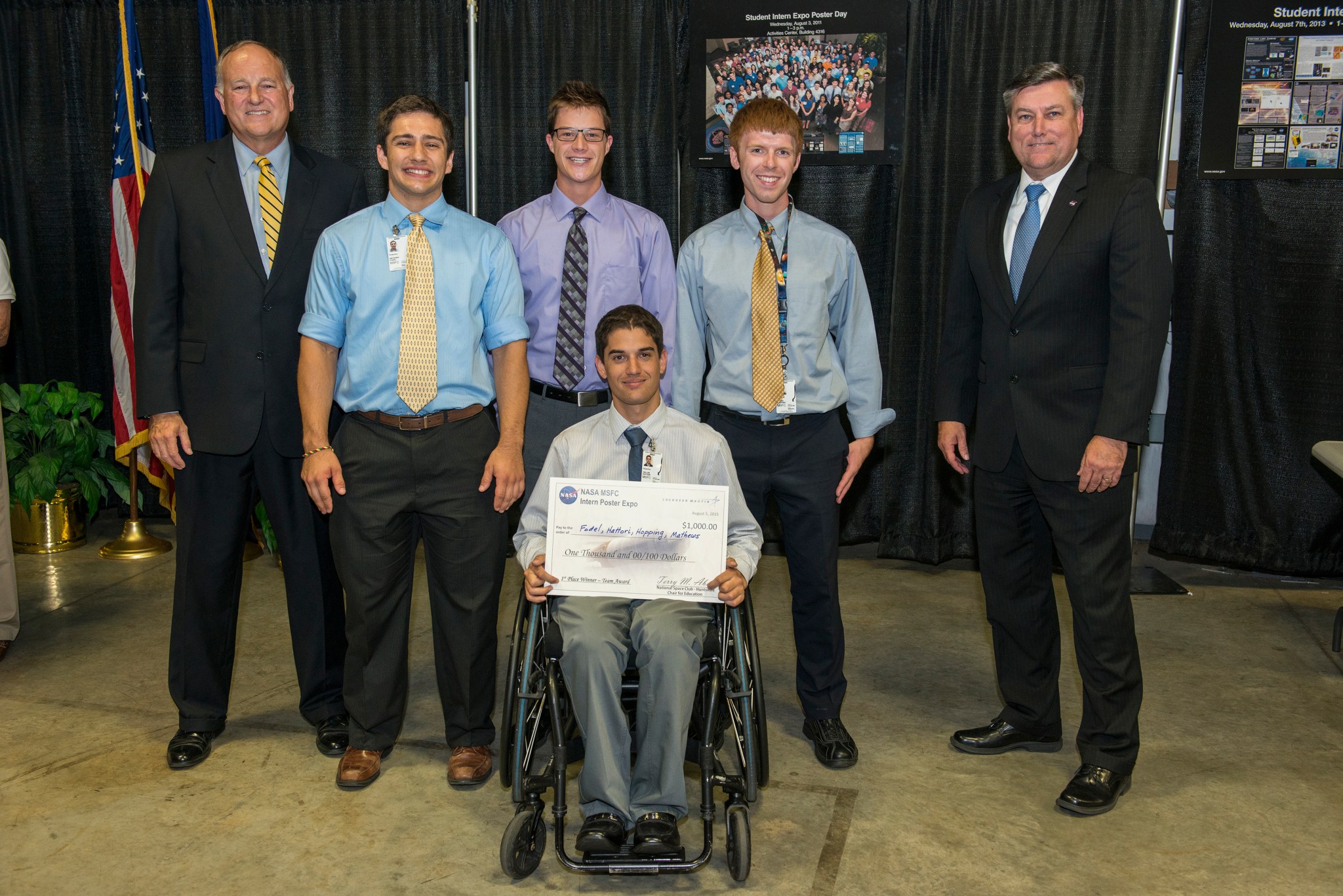
SCIENCE:
1st Place: Gap Analysis of Land Topography Data Derived from Satellite Imagery for Project Good Earth
Christina Cauley of the University of Hawaii, Hilo
Mentor: Gary Jedlovec
2nd Place: Automated Detection of Meteor Showers
Glenn Sugar of Stanford University in California
Mentor: Bill Cooke
3rd Place: Techniques to Measure Mirror Surface Profiles using Deflectometry
Andrew Eberhardt of the University of Washington in Seattle
Mentor: Mikhail Gubarev
ENGINEERING: Propulsion and Flight Programs
1st Place: Verification and Validation of a CFD Model of Liquid Slosh in Microgravity
Alex Dworzanczyk of The Cooper Union for the Advancement of Science and Art in New York
Mentor: Jeffrey West
2nd Place: Acoustic Analysis for the In Space Propulsion Workhorse Fuel Pump
Luis Seda Santiago of the University of Puerto Rico at Mayaguez
Mentor: Andrew Mulder
3rd Place: Compatibility Testing of Green Monopropellants
Karl de Zoeten of St. Edward’s University in Austin, Texas
Mentor: James Richard
ENGINEERING: Materials and Test
1st Place: Modeling and Testing of Metal-Coated Rapid Prototyped Structures
Adrian Soler-Luna of Wichita State University in Wichita, Kansas
Mentor: Alexandra Dominguez
2nd Place: Permeability of Rubber Insulation for the Solid Rocket Motors for the Space Launch System
Benjamin Ivie of Lehigh University
Mentor: Scotty Sparks
3rd Place: Effects of Pin Eccentricity on Friction Stir Welds
Emily Tarwater of Auburn University in Alabama
Mentor: Arthur Nunes
ENGINEERING: Systems and Communications
1st Place: Structural Analysis of Brackets for Ground Support Equipment for the Space Launch System
Rochelle Brooks of the University of Minnesota Twin Cities in Minneapolis
Mentor: Sarah Sandridge
2nd Place: Plasma Pyrolysis Assembly Carbon Trap Development
Elspeth Petersen of Iowa State University
Mentor: Morgan Abney
3rd Place: Analyzing the Structural Strength of Pelletized Carbon Dioxide Adsorbents
Matthew Hancock of the University of Kentucky in Lexington
Mentor: James Knox
ENGINEERING: Vehicles and Operations
1st Place: Space Launch System-Derived Deep Space Habitat Waste and Hygiene Compartment Design and Functional Assessment
Rami Hamzey of Boston University in Massachusetts
Mentor: David Reynolds
2nd Place: Quality Control of Wind Data from 50-MHZ Doppler Radar Wind Profiler
Austin Vacek of Millersville University in Millersville, Pennsylvania
Mentor: Ryan Decker
3rd Place: PWM Board for DaVID Development and Correlative Electromagnetic Levitation Actuator Board
Abimael Gonzalez Medina of the Inter American University of Puerto Rico
Mentor: Sarah Triana
Blair, an ASRC Federal/Analytical Services employee, supports the Office of Strategic Analysis & Communications.
RS-25 Engine Test, Chandra Observations and Perseid Meteor Shower Featured On ‘This Week @NASA’
Three events supported by NASA’s Marshall Space Flight Center — an RS-25 engine testing, a new discovery using the Chandra observatory and live coverage of the Perseid meteor shower – are all featured in the latest edition of “This Week @NASA,” a weekly video program broadcast nationwide on NASA-TV and posted online.
On Aug. 13, NASA test fired an RS-25 rocket engine at the Stennis Space Center, near Bay St. Louis, Mississippi. The 535-second test was the sixth in a series of seven developmental tests to investigate how the former space shuttle main engines can stand up to the rigors and requirements needed to power NASA’s new Space Launch System rocket, which will carry humans deeper into space than ever before. Prior to the test, a NASA social event was held with key personnel, including NASA Deputy Administrator Dava Newman, offering social media followers a behind-the-scenes perspective of tasks and expectations for the journey to Mars.
In astronomy news, the smallest supermassive black hole ever detected was located in the center of a galaxy. The discovery of this interstellar oxymoron, made with NASA’s Chandra X-ray Observatory and the Clay Telescope in Chile, could provide clues to how larger black holes formed along with their host galaxies 13 billion years or more in the past. This black hole is estimated to be less than half the mass of the previously found smallest black hole at the center of a galaxy.
Finally, the annual Perseid meteor shower took place during the overnight hours of Aug. 12-13. Marshall conducted a four-hour, live broadcast on NASA Television, featuring guest commentary by several meteor experts from NASA’s Meteoroid Environment Office, as well as NASA’s Johnson Space Center, the Goddard Space Flight Center and the Ames Research Center. In addition, the Marshall team conducted a “Tweet-Chat,” which allowed social media followers to ask questions to the participating guest experts. The Perseids are associated with the comet Swift-Tuttle, which orbits the sun every 133 years. Each August, Earth passes through a cloud of the comet’s debris, which burns up in Earth’s atmosphere — creating one of the best meteor showers of the year.
View this and previous episodes at “This Week @NASA” or at https://www.youtube.com/user/NASAtelevision.
This Week in NASA History: Mueller Pens Skylab Concept — Aug. 16, 1966
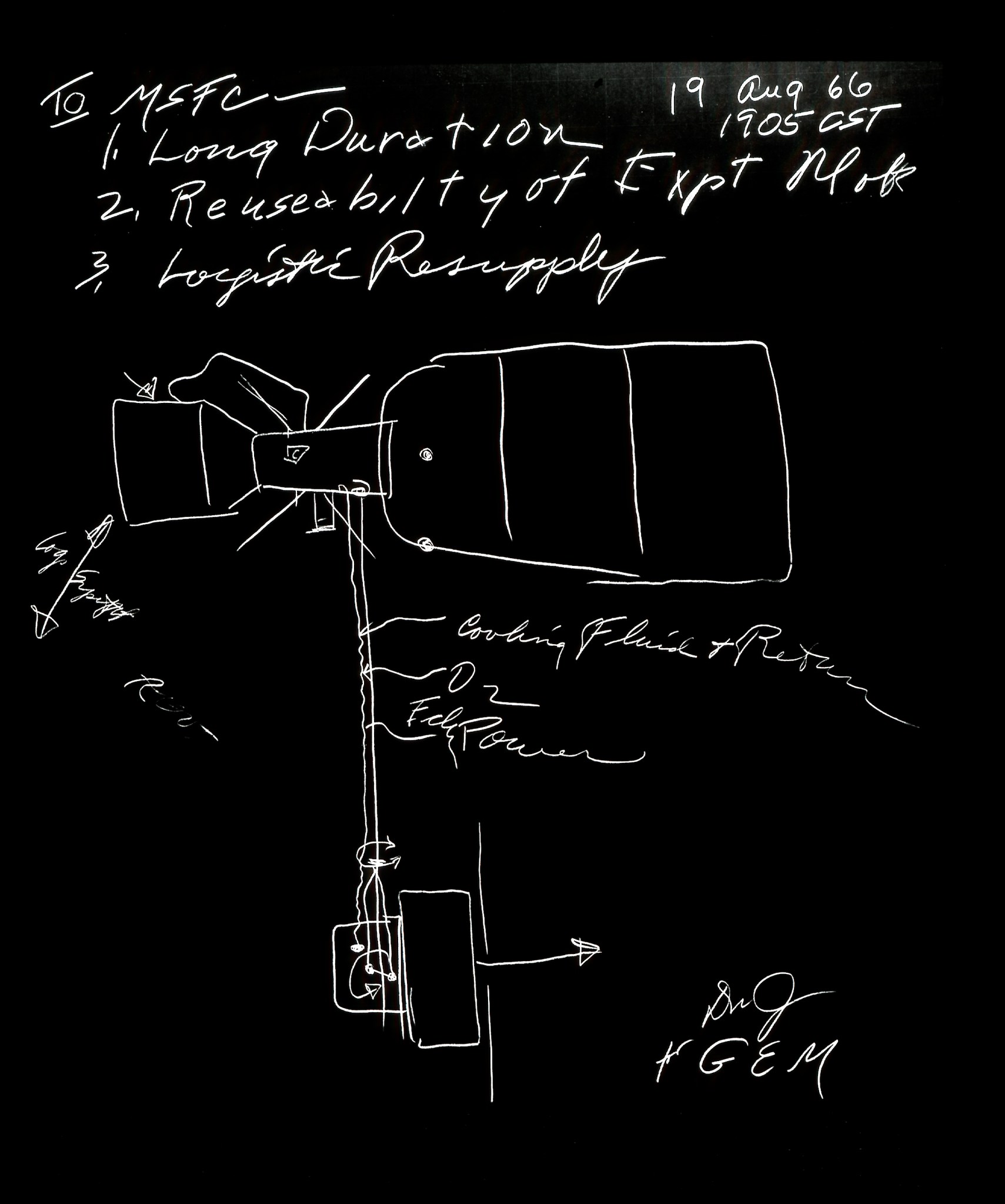
This week in 1966, NASA Associate Administrator for Manned Space Flight, George E. Mueller, using a felt pen and poster paper, produced the conceptual layout for the future space station Skylab’s major elements. In addition to providing Skylab’s four Saturn launch vehicles, NASA’s Marshall Space Flight Center was also responsible for directing many of the station’s experiments. The NASA History Program documents and preserves NASA’s remarkable history through a variety of products — photos, press kits, press releases, mission transcripts and administrators’ speeches. For more pictures like this one and to connect to NASA’s history, visit the History Program’s Web page.





























